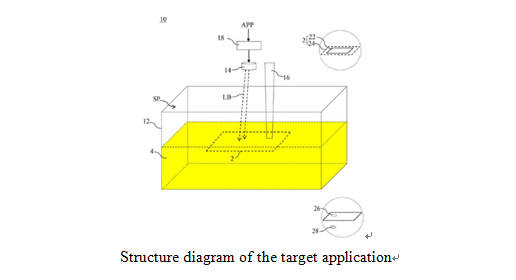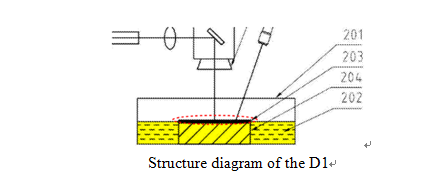
Introduction
During an examination involving the inventive step of invention patent applications, applicants may usually find comments such as "the distinguishing technical feature XXX is common knowledge in the art, and on the basis of the combination of the reference documents and common knowledge in the art, it would have been obvious for a person skilled in the art to arrive at the claimed technical solution of the present application" in office actions. In addition, the patentability of the applications is questioned for lacking an inventive step. With regard to such office actions, applicants might be confused on how to prove that the technical solution involved in the distinguishing technical feature does not belong to common knowledge in the art.
The inventive step of an invention refers to, as compared with the prior art, the invention having prominent substantive features and representing notable progress.
Therefore, to determine whether or not the invention involves an inventive step involves determining whether or not the invention has prominent substantive features and represents notable progress or in other words, whether or not the invention is obvious as compared with the prior art.
When the inventive step of an invention is assessed, the typical approach to the assessment of prominent substantive features and the criterion for determining notable progress are respectively provided in the Guidelines for Patent Examination. Usually the following three steps are followed to determine whether the invention involves an inventive step.
Step 1: Determining the closest prior art;
Step 2: Determining the distinguishing feature(s) of the invention and the technical problem actually solved by the invention;
Step 3: Determining whether or not the claimed invention is obvious to a person skilled in the art.
It can be seen from the above that whether the distinguishing feature(s), which is/are considered to be common knowledge in the art, is/are obvious or not is the main point for determining whether or not the invention involves an inventive step, and the distinguishing feature(s) is/are also the focus of the dispute between the applicant and the examiner.
Here, the author provides a strategy for responding to office actions related to "common knowledge in the art" in combination with the following specific case.
Analysis of Case
A description will be given by taking a certain invention as an example.
Reference document 1 (D1), which was retrieved by the examiner, was the closest prior art, and the distinguishing features were as follows:
1. The specific gravity of the substrate is greater than that of the liquid, and the secondary substrate is separated from the substrate and sinks into the bottom of the carrier;
2. Drilling a hole in the substrate by a laser beam, so as to form a hole and a derivative in the substrate, and the derivative is separated from the substrate and sinks into the bottom of the carrier;
3. Obtaining a main substrate having holes.
On the basis that D1 discloses the technical feature "performing laser cutting in the vicinity of the liquid surface of the cooling liquid", the technical solution involved in the distinguishing technical features 1-3 is considered to be common knowledge in the art.
In the documents for responding to the office action, the applicant amended claim 1 with reference to the technical contents recited in the description and the accompanying drawings thereof, and the amended claim 1 defined the technical feature "the substrate is coated with the liquid and a surface of the substrate is lower than a liquid surface of the liquid".
During responding to the office action, the applicant provided an argument based on three viewpoints of "technical problem-technical effect-technical motivation".
The viewpoint of the technical problem
The amended claim 1 of the target application defines the technical feature "the substrate is coated with the liquid and a surface of the substrate is lower than a liquid surface of the liquid ". In order to solve the problem that debris (such as, glass particles) generated by cleaning debris by means of spraying water in the existing laser processing will pollute the air and cause occupational injuries to operators or on-site personnel, the target application proposed an immersion laser processing method and a system thereof.
On the contrary, D1 disclosed the technical feature "the cutting surface of aluminum alloy workpiece should be exposed outside the liquid surface of the cooling liquid". Therefore, the distinguishing technical feature between the amended claim 1 of the target application and D1 lay in that the substrate is covered with a liquid, i.e. the surface of the substrate is lower than the liquid surface of the liquid. As a result, the technical problem actually solved by the target application was how to prevent a derivative generated in a processing process from polluting air and causing a professional injury to personnel.
The viewpoint of the technical effect

In the target application, a liquid 4 and a substrate 2 are accommodated in an accommodating space SP of a carrier unit 12, and the substrate 2 is covered with the liquid 4, that is, the cutting surface of the substrate 2 is lower than the liquid surface of the liquid 4. In other words, the entire substrate 2 is immersed in the liquid 4. Therefore, the technical effect of the target application is that redundant substrates or derivatives generated in the processing process can be deposited in the liquid 4 without polluting the air.
The viewpoint of the technical motivation

In D1, the cutting surface of the aluminum alloy workpiece 203 is not covered with the cooling liquid 202, so that when the aluminum alloy workpiece 203 is cut by a laser, a great temperature gradient will be formed by a temperature difference at a cutting seam edge (i.e., an edge angle) of the cutting surface, so that the cutting seam edge of the cutting surface can produce an effect of heat processing, thereby reducing the bad conditions, such as the slag hanging, rough edges and edges collapse of the cutting seam. Thus, it can be seen that the feature "the cutting surface of the aluminum alloy workpiece 203 is not covered with the cooling liquid 202" was an essential technical means in D1. That is to say, the technical feature "an aluminum alloy workpiece is covered with a cooling liquid" was not disclosed by D1, and D1 taught away from the target application. Therefore, it was obvious that the technical solution claimed by the amended claim 1 of the target application could not be easily obtained by those skilled in the art on the basis of the combination of D1 and common knowledge in the art. That is to say, the aforementioned newly added distinguishing technical feature "the surface of the substrate 2 is lower than the liquid surface of the liquid 4" was not a conventional means "well-known" to a person skilled in the art for solving the problem of "how to prevent a derivative generated in a processing process from polluting air and causing a professional injury to personnel".
It can be seen from the above analysis that by taking the reference documents as well-known evidence, the applicant re-determined the distinguishing technical feature(s) of the target application from D1 by amending claim 1, and thus the solution in the original claim 1 was transformed into a new solution containing a technical feature which was taught away by D1. The amendment and argument were accepted by the examiner, and the target application was finally granted for a patent right.
Conclusion
Referring to the above case, the author is of the opinion that when preparing a response to an office action related to common knowledge in the art, a strategy can be considered according to the following steps:
1. Determining whether the distinguishing technical feature(s) is/are or not an essential technical feature(s) for solving the technical problem of the target application.
2. If not, adding the essential technical feature(s) for solving this technical problem into an independent claim, and providing arguments that the amended solution is not disclosed by the reference document(s), and will not be obtained by a person skilled in the art based on the teaching by the reference document(s).
The above description is merely a rough and shallow understanding of the author obtained by way of a case, and if there are any disadvantages, please indicate and guide all the differences.


Follow us






